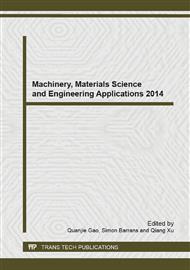p.3
p.7
p.11
p.16
p.20
p.24
p.28
p.32
p.37
Investigation of Solvent-Dependent Catalytic Behavior of a Hydrophobic Guest Artificial Glutathione Peroxidase
Abstract:
The investigation of the catalytic behavior of a hydrophobic guest artificial glutathione peroxidase (GPx) (ADA-Te-ADA) was carried out employing H2O2 and 3-carboxyl-4-nitrobenzenethiolas (TNB) as substrates. The relation between the catalytic rate of ADA-Te-ADA and the property of solvent used in the determination of catalytic activity was revealed. Typically, the co-solvents including ethanol, DMSO, DMF and CH3CN were employed in the determination of catalytic rates. It indicated that ADA-Te-ADA exhibited the typical solvent-dependent catalytic behavior. Especially, the higher catalytic rate was observed when polar protic solvent (ethanol) was used compared with other co-solvents. It suggested that polar protic solvent was the appropriate co-solvent for the assay of catalytic activity of hydrophobic artificial GPx. Additionally, the strong polarity of polar aprotic solvent plays an important role in the enhancement of GPx catalytic activity. This study bodes well for the understanding of the catalytic behavior of hydrophobic guest artificial GPx.
Info:
Periodical:
Pages:
20-23
Citation:
Online since:
June 2014
Authors:
Price:
Сopyright:
© 2014 Trans Tech Publications Ltd. All Rights Reserved
Share:
Citation:


